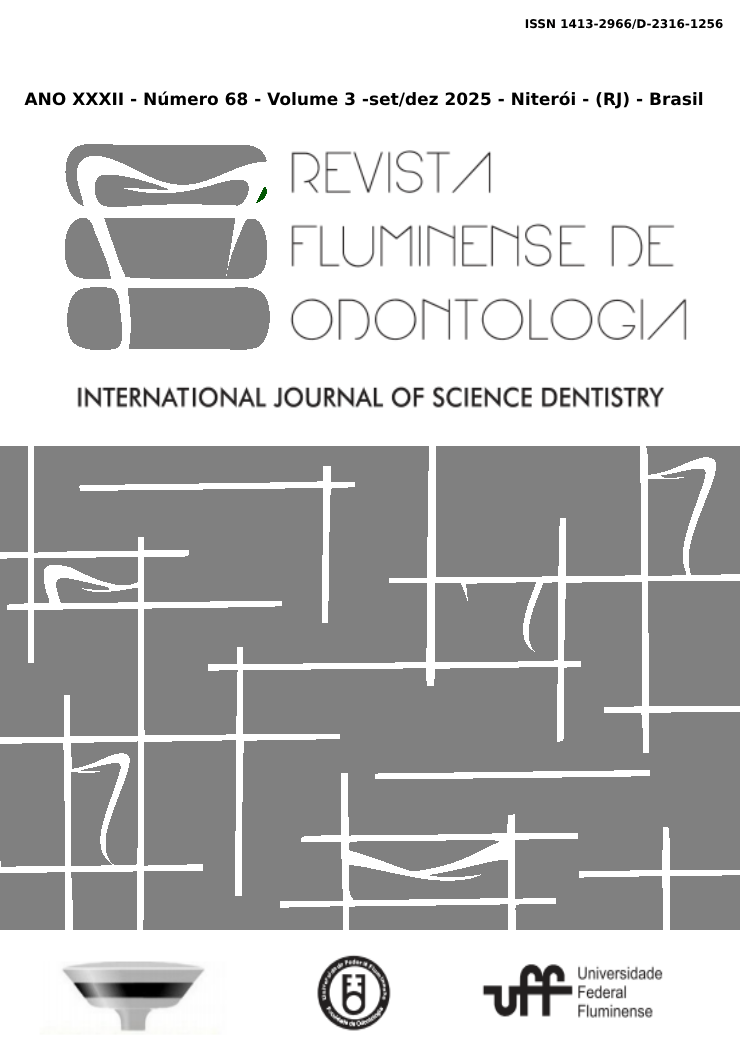Surgical–prosthetic treatment of Kelly Syndrome – case report with three years of follow-up
DOI:
https://doi.org/10.22409/ijosd.v3i68.62054Abstract
Introduction: Prosthetic rehabilitation of the maxilla and mandible becomes challenging and highly complex in cases where patients present with “combination syndrome”, also known as Kelly syndrome. This syndrome was described according to the combination of the five commonly present characteristics: resorption of the maxillary bone ridge in the anterior region; palatine papillary hyperplasia; volumetric increase in the maxillary tuberosity region; extrusion of the lower anterior teeth and resorption of the posterior mandibular bone. This report aimed to describe the clinical case of a patient seen at a private dental clinic and who presents a combination of the characteristics described by Kelly (1972) and classified as a syndrome. It also aimed to permeate the stages of treatment: assessment, diagnosis, treatment plan/planning, surgical and prosthetic procedures, prognosis, patient follow-up. Case report: Patient V.J.R., male, 62 years old, attended the Rosenvaldo Institute, in July 2019, with the main complaint: “I want to smile again and chew better”. When performing anamnesis, the patient reported that he suffered from arterial hypertension, heart failure, type II diabetes mellitus, dyslipidemia, respiratory difficulty and no changes in the hematological system. The surgery to install dental implants in the maxilla and mandible was performed under sedation with the presence of an anesthesiologist and without complications. The last step was the installation of the protocol prostheses in the maxilla and mandible and the patient was satisfied with the realization of his dream of smiling again and having greater chewing comfort and quality of life. Periodic visits are made to the dental office every 6 months for monitoring, removal and cleaning of the upper and lower protocol prostheses. Conclusions: The procedures performed allowed to reestablish the occlusion, balance the stomatognathic system, provide a better smile esthetics to the individual and consequently improve the patient's self-esteem and quality of life.
Keywords: Dental implant; Kelly syndrome; Prothesis protocol; Surgery.





